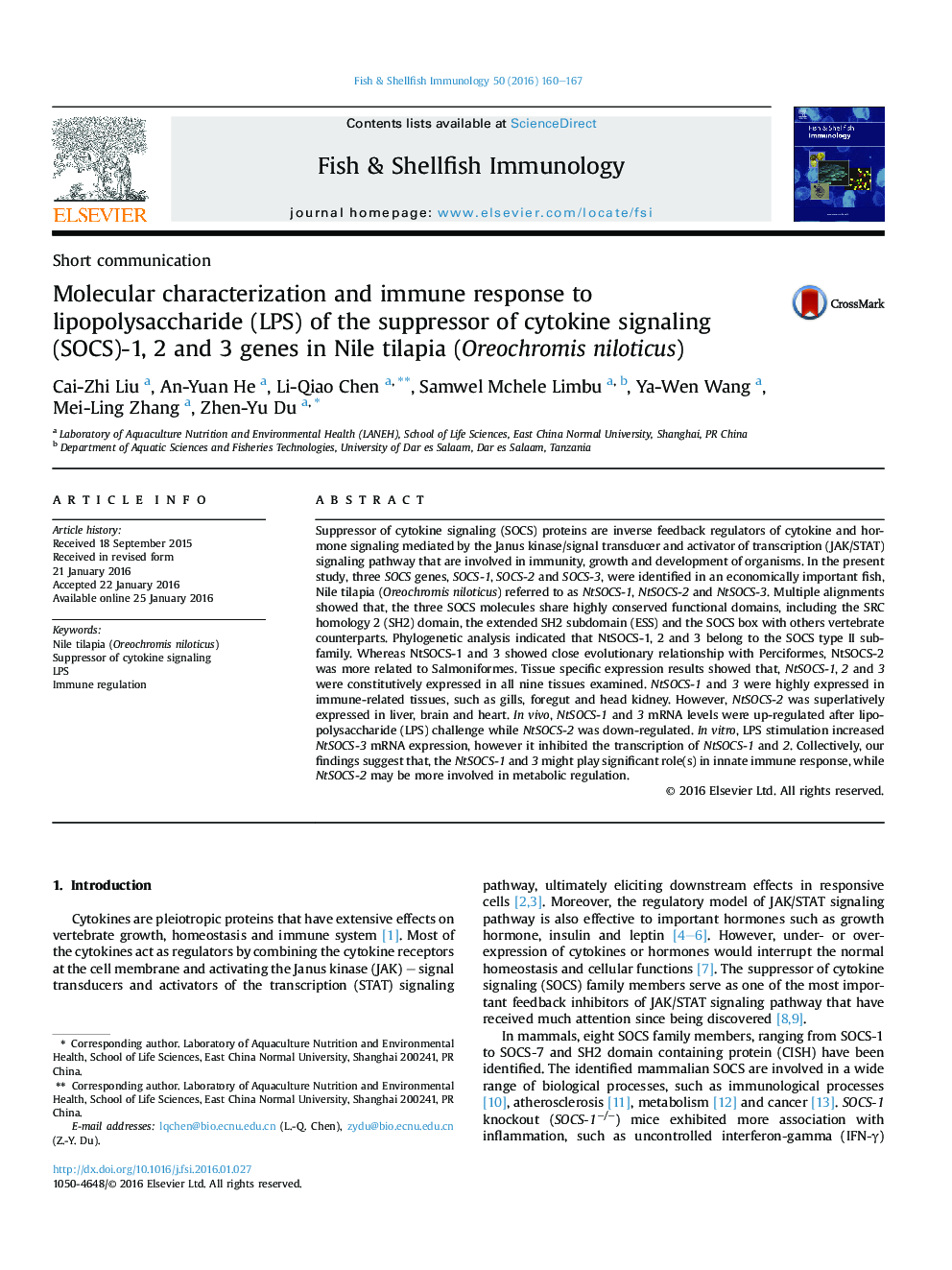| Article ID | Journal | Published Year | Pages | File Type |
|---|---|---|---|---|
| 2430703 | Fish & Shellfish Immunology | 2016 | 8 Pages |
•NtSOCS-1, 2 and 3 amino acid sequences were highly conserved in vertebrates.•NtSOCS-1 and 3 were highly expressed in immune related tissues, but NtSOCS-2 was highly expressed in liver.•In vivo, NtSOCS-1 and 3 were promoted post LPS challenge, while NtSOCS-2 was down-regulated.•In vitro, expression of NtSOCS-3 could be up-regulated post LPS stimulation but NtSOCS-1 and NtSOCS-2 inhibited.
Suppressor of cytokine signaling (SOCS) proteins are inverse feedback regulators of cytokine and hormone signaling mediated by the Janus kinase/signal transducer and activator of transcription (JAK/STAT) signaling pathway that are involved in immunity, growth and development of organisms. In the present study, three SOCS genes, SOCS-1, SOCS-2 and SOCS-3, were identified in an economically important fish, Nile tilapia (Oreochromis niloticus) referred to as NtSOCS-1, NtSOCS-2 and NtSOCS-3. Multiple alignments showed that, the three SOCS molecules share highly conserved functional domains, including the SRC homology 2 (SH2) domain, the extended SH2 subdomain (ESS) and the SOCS box with others vertebrate counterparts. Phylogenetic analysis indicated that NtSOCS-1, 2 and 3 belong to the SOCS type II subfamily. Whereas NtSOCS-1 and 3 showed close evolutionary relationship with Perciformes, NtSOCS-2 was more related to Salmoniformes. Tissue specific expression results showed that, NtSOCS-1, 2 and 3 were constitutively expressed in all nine tissues examined. NtSOCS-1 and 3 were highly expressed in immune-related tissues, such as gills, foregut and head kidney. However, NtSOCS-2 was superlatively expressed in liver, brain and heart. In vivo, NtSOCS-1 and 3 mRNA levels were up-regulated after lipopolysaccharide (LPS) challenge while NtSOCS-2 was down-regulated. In vitro, LPS stimulation increased NtSOCS-3 mRNA expression, however it inhibited the transcription of NtSOCS-1 and 2. Collectively, our findings suggest that, the NtSOCS-1 and 3 might play significant role(s) in innate immune response, while NtSOCS-2 may be more involved in metabolic regulation.
